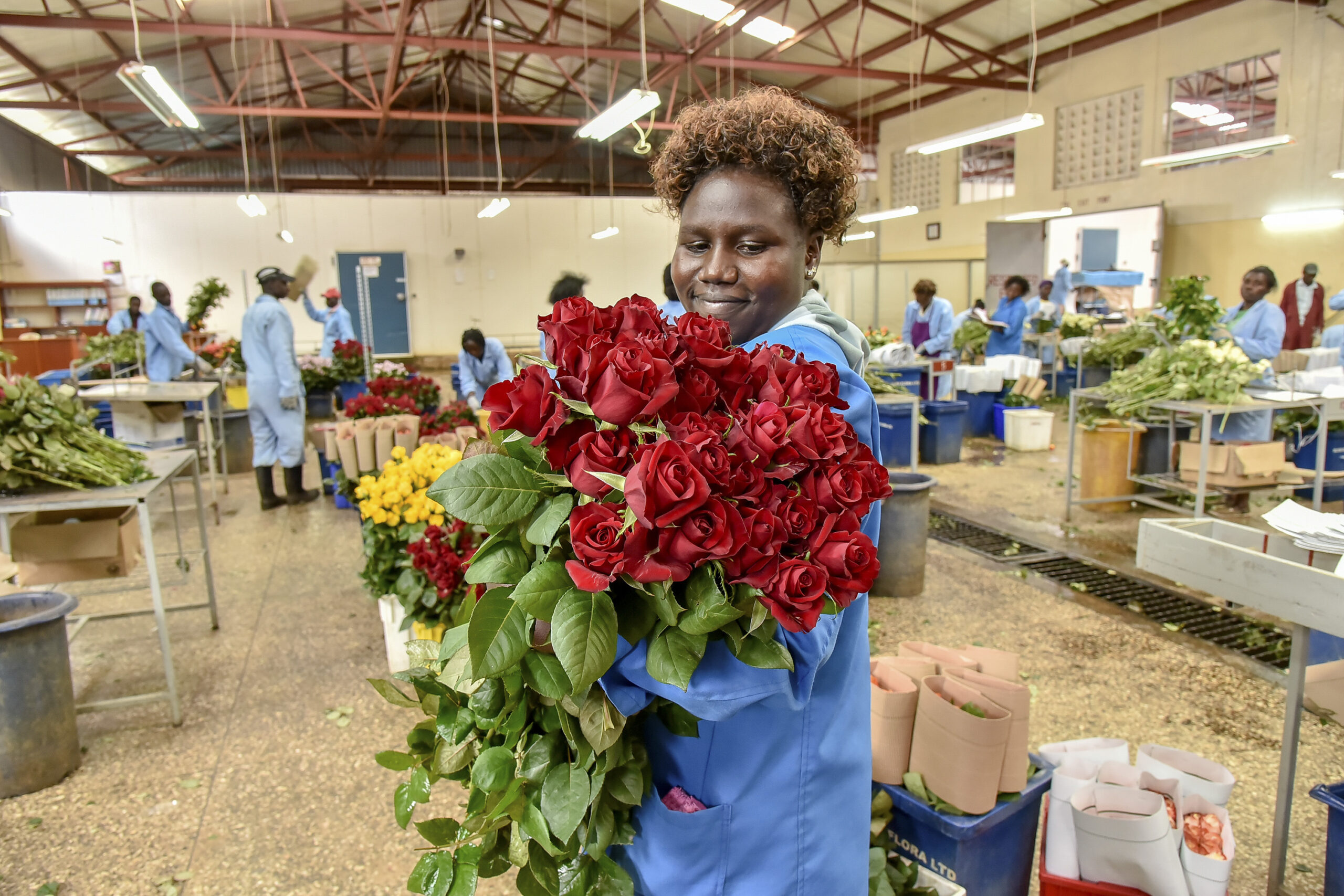
NAKURU, Kenya — Pamela Nanjala, a 38-year-old mother of two, was among many sent home in March 2020 by Sosiani Flowers, a flower farm in Nakuru, 86 miles west of Kenya’s capital Nairobi, when the Covid-19 hit the horticulture industry.
“By the end of March 2020, things started going downwards,” she told Zenger News.
“We were told that business had gone down and that we should go home and wait for further communication. Things were tough, with children to feed and house rent to pay. We relied on well-wishers to survive.”
That communication from the flower farm, which she had been anxiously anticipating, came seven months later.
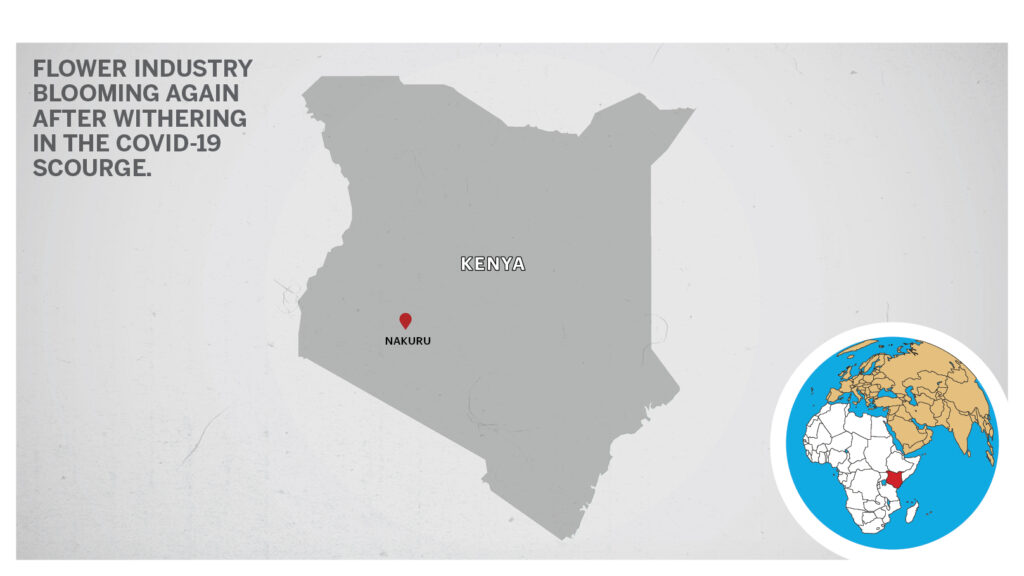
Nanjala has since resumed work at Sosiani Flowers.
She and her colleagues were busy replanting flower stalks uprooted from the greenhouses at the pandemic’s peak.
After a devastating season that saw the Kenyan cut flower industry under the scourge of the Covid-19 pandemic, the sector is well on the way to recovery.
A March 2021 Central Bank of Kenya survey revealed that flower farms across Kenya had recalled their employees at an average of 120 percent by March 2021 compared to 113 percent in January 2021 and 97 percent in November 2020.
“I can confidently say that 100 percent of our members are now back,” said Ferdinand Juma, the secretary-general of the Kenya Plantation and Agricultural Workers Union, which represents workers within the flower industry, too.
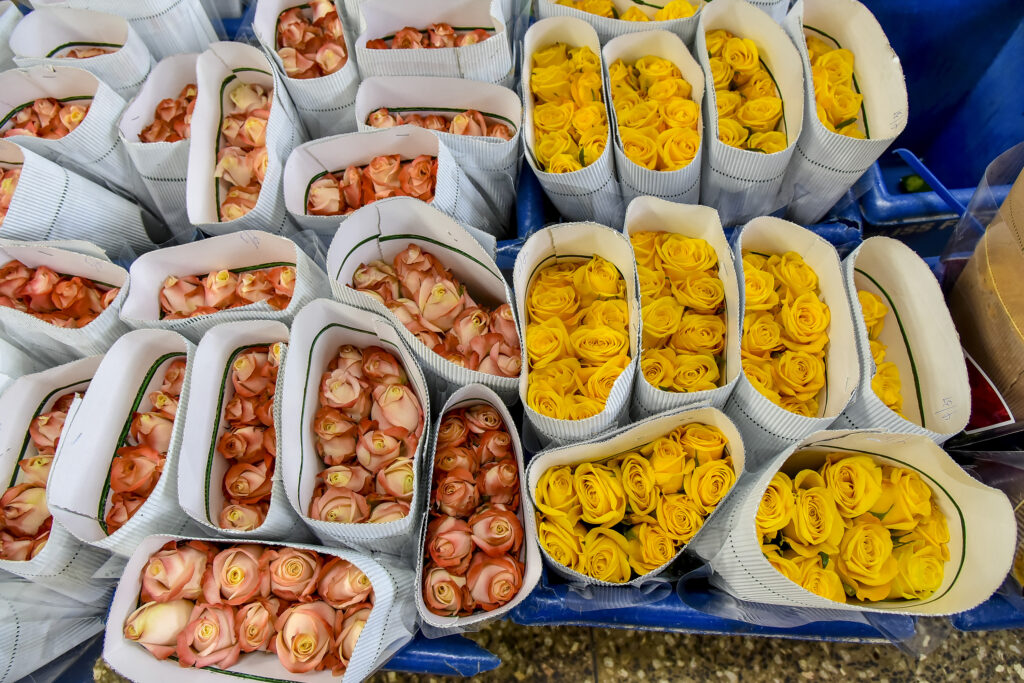
Juma said at least 30,000 of their members were sent on unpaid leave in April and July 2020 when the effects of the pandemic were felt the most.
“Thousands of casual workers who are not their members were also affected, but the majority are back at work,” he said.
With the uncertainty brought by the pandemic, coupled with the termination of employment, many flower farm workers had to rely on well-wishers, relatives, friends, and churches for survival.
Those who live outside company housing schemes were faced with eviction orders for failing to pay rent.
Angeline Nafula, a 26-year-old mother of one, was evicted from her one single room iron sheet-walled house in Kihoto estate, Naivasha, for accumulating three months’ rent arrears.
“The landlord came and told me to vacate his house because my rent had accumulated and I no way of paying,” she told Zenger News.
“Friends gave me a place to sleep.”
Nafula was among the tens of hundreds of works sent on unpaid leave by Oserian Flowers Limited in Naivasha. She, too, is happily back at work.
At one point, the Kenya Flower Council stepped in to support flower farm workers facing hard times. The sector directly employs 150,000 people.
Cut flowers contribute one percent of Kenya’s gross domestic product and 45 percent of Kenya’s total horticulture exports, according to the Horticulture Crops Directorate.
With countries going into lockdowns, travel and movement being restricted, and markets being closed, flower companies in Kenya were forced to diversify for survival.
In April and May 2020, according to the Kenya Flower Council, sales of cut flowers in international markets went as low as 35 percent.
“With no market for our flowers, we decided to uproot them and planted a variety of African vegetables, which we sold to traders,” Amos Keter, a farm manager at Baraka Roses, located in Dundori, Nakuru, told Zenger News.
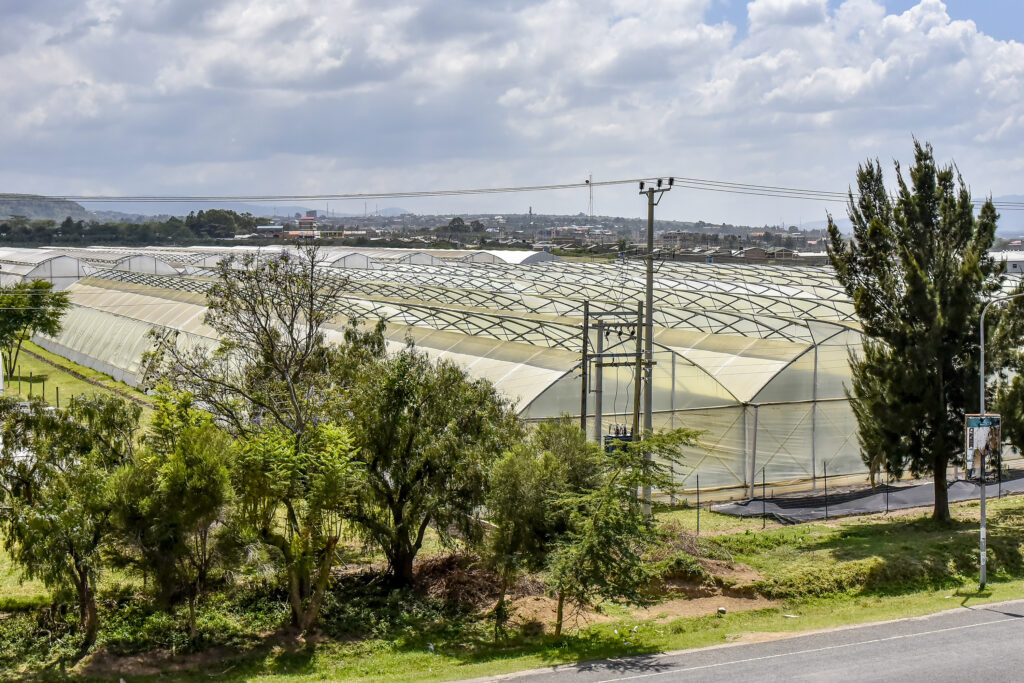
And just like Baraka Roses, most other flower farms resorted to growing vegetables like cabbages in their greenhouses.
Farms uprooted flowers between March and July 2020.
Flower companies felt the impact of travel restrictions when cut flower orders worth millions of dollars were canceled when countries across the globe suspended flights to curb the spread of the coronavirus.
The European Union cut flower market lost at least 4.12 billion EUR ($31.3 million)in the first weeks of the Covid-19 occasioned by the lockdown between March and April 2020, according to a survey by the International Flower Trade Association, Union Fleurs.
With high freight charges, limited orders, and closed markets, most companies could not export, and Kenya’s flower industry slowly withered. However, by August 2020, the sector had started showing signs of recovery.
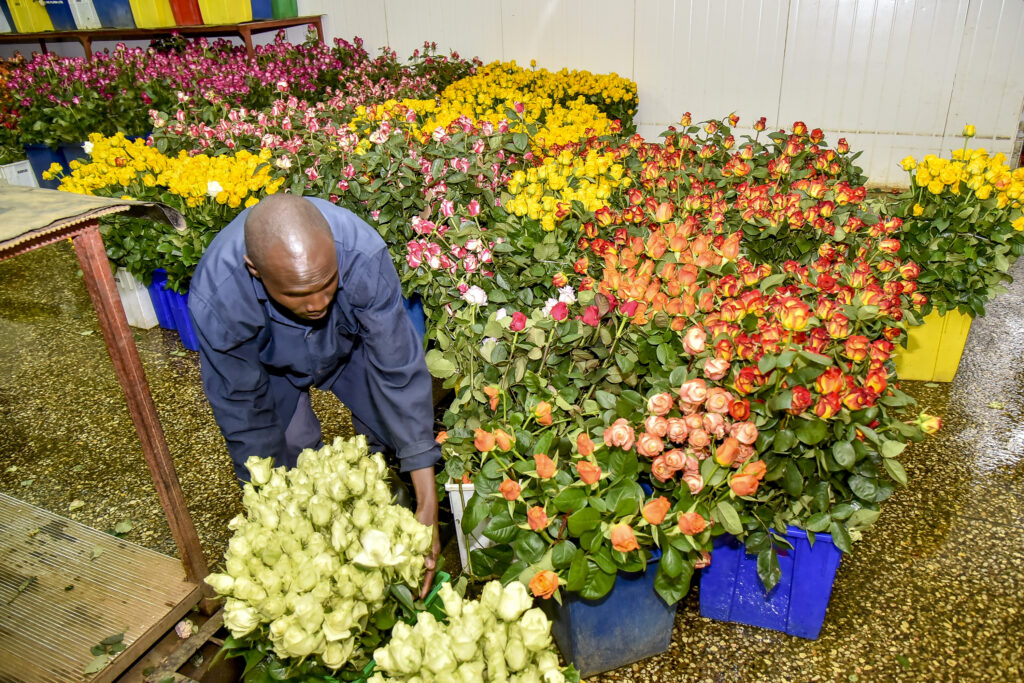
The Central Bank of Kenya survey showed that by November 2020, flower companies had shown a recovery rate of 80 percent, with production levels being at 83 percent.
Complete resumption of flights in and out of Kenya, easing restrictions worldwide, has helped the sector stay steady on its recovery journey.
Baraka Roses now exports more than 100,000 stems of roses daily, up from a paltry 3,000 between April and July 2020.
The company has so far recalled 400 out of 460 workers to help meet huge orders, which are back 75 percent, up from 10 percent last year.
“We are back to full operation, and we are doing better compared to last year,” Andrew Odhiambo, the farm’s operations manager, told Zenger News.
“Our hope and prayer are that by the end of the year, the company will be fully back to where it was before.
In Naivasha, a hub of cut flower production in Kenya, most companies badly hit by the pandemic are back in business and are registering a 60 percent export business.
The association of flower growers in Naivasha says that at least 90 percent of their workforce is back.

The chief executive of the association, Joseph Kariuki, said enhanced cut flower demand from the European market has helped companies regain their footing.
“Things are promising as of now, and we hope—if all factors remain constant—our full recovery will come sooner than expected,” Kariuki told Zenger News.
Kenya Flower Council chief executive Clement Tulezi is hopeful that flower exports will peak by the end of the year.
“With the full resumption of flights and reduction of freight charges, the sector will slowly shake off the Covid-19 related negative effects,” he told Zenger News.
He predicts the industry to recover in the second quarter of 2022 fully.
The Central Bank of Kenya projects that the cut flower export orders will average 97 percent between April and July 2021.
Currently, some farms are receiving orders well beyond their production capacity, with the Central Bank of Kenya projecting that farms will meet a 97 percent average of orders between April and July 2021 while they will realize 100 percent by August 2021.
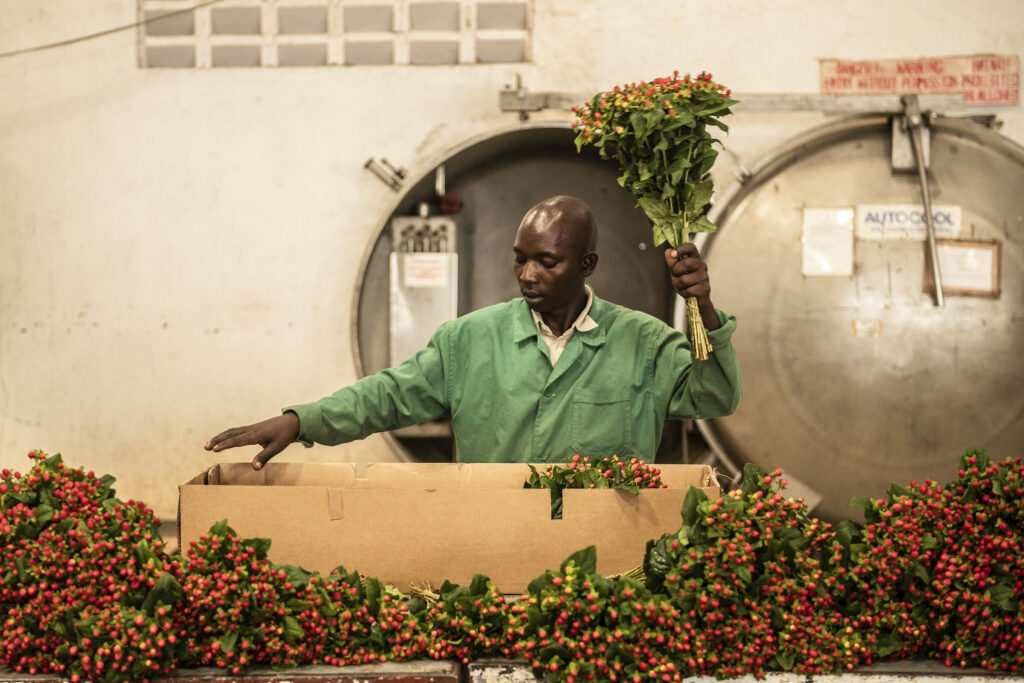
Andrew Obudo, a flower grader at Oserian Flowers Ltd, said that he is happy to be back at work after nine-month-long hiatus.
“I was among the lot that was sent home on unpaid leave in April 2020, but luckily when things stabilized, I was recalled in January (2021),” he told Zenger News.
Obudo was not lucky. He lost his job during the pandemic and also lost his family after his wife of seven years abandoned him.
“She told me that she could not bear the burden of staying with a man who has no job, and she left with our two children.”
Obudo said work is plenty and sometimes works extra hours to meet the growing demands for flowers, especially from the European market.
His only prayer now is that another deadly wave pandemic will not strike and upstage things again.
(Edited by Kipchumba Some and Amrita Das. Map by Urvashi Makwana)
The post Blooming Again: Kenya Flower Sector’s Future Rosy After Withering Under Covid-19 appeared first on Zenger News.
